North Norfolk's Deep History Coast is a 22-mile stretch of coastline between Weybourne and Cart Gap and is steeped in millions of years’ worth of history. With wonderful beaches, ideal for fossil and artefact hunting and a fascinating Discovery Trail, with fact revealing Discovery Points along the way, there is a lot to discover. There is a free downloadable Deep History Coast App to bring the trail to life linking with the Discovery Points along the way with information and interactive activities.
Through the app, you’ll be able to see the past come back to life and find out what life in Doggerland was like through the eyes of a hominin family, watch animals from 800,000 years ago roam the land and find out the names of any fossils you may find. Discovery Points are located at each of the main villages and towns. Here we focus on West Runton.
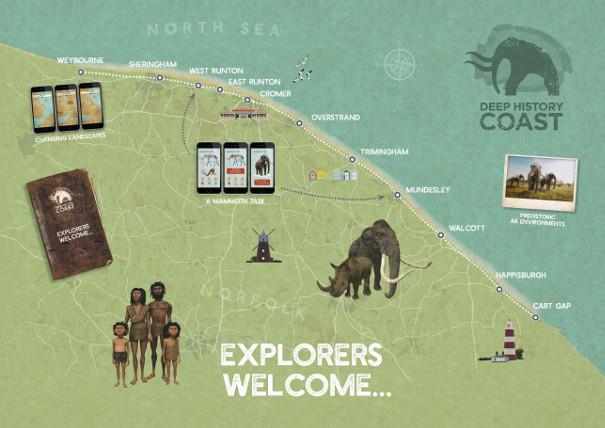
ABOUT WEST RUNTON
The village of West Runton is home to a beautiful Blue Flag beach which is most well-known for the discovery of a Steppe Mammoth skeleton in 1990. The remains dated back to the Ice Age and is the most complete skeleton of a Steppe mammoth ever found in the world. More recently the Village Inn, has a blue plaque on the wall that recalls a concert played at the now-demolished Pavilion by the punk band the Sex Pistols. Find out more about this interesting and varied history with our spotlight on West Runton.
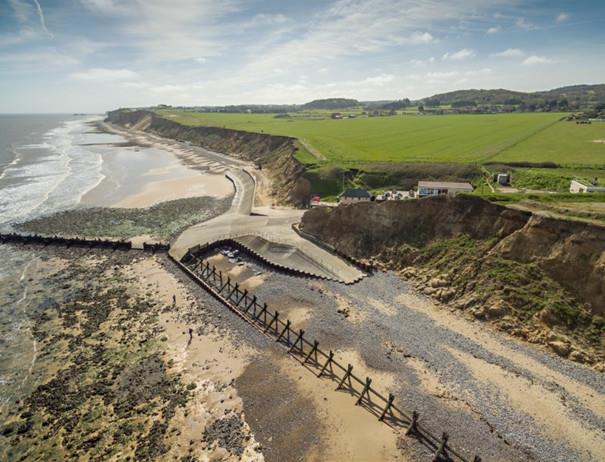
EARLY HISTORY
Evidence of Roman habitation just south of the village on Beeston Regis Heath was discovered in 1859; a complete set of quern-stones dating back to Roman times were found, which were used to grind materials such as graIn to make flour for bread-making. Also found here were circular pits called ‘Hills and Holes’, dug to obtain iron ore, which are thought to date from prehistoric times. In the Domesday book, the settlement of Runton is given the name of Rugutune and Runetune.
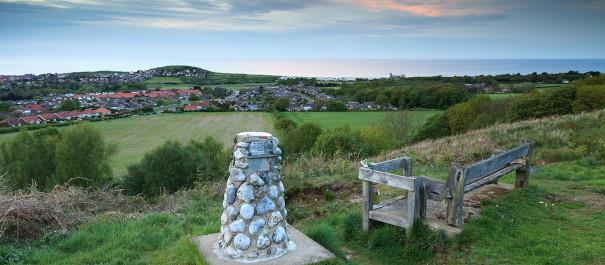
DEEP HISTORY
Today, West Runton village is on the Deep History Coast Trail with a Discovery Point by the beach which provides visitors with lots of interactive information about how the area looked millions of years ago. Download the App to find out more about the area's history, as well as play games and identify any fossils you find along the beach. From here, you can walk the Coast Path to either Sheringham or East Runton discovering things along the way.
It was on the beach at West Runton that the fossilised remains of a Steppe mammoth were first discovered in 1990 after winter seas had eroded the cliff (more information below).
But that’s not the only animal linked to the village. Remains of rhinos that lived more than 600,000 years ago which were as big as a car, have been found in the cliffs. The skull of an ancient rhino emerged from the base of the cliffs at West Runton in 2015 – and was nearly washed away again before fossil hunters could protect it from the waves. As storms eat away the base of the cliffs, fresh discoveries are made on a regular basis. Maybe you will be lucky and find a real treasure when exploring here. But take care near cliffs, don’t dig into the bases and watch out for the incoming tides and cliff falls.
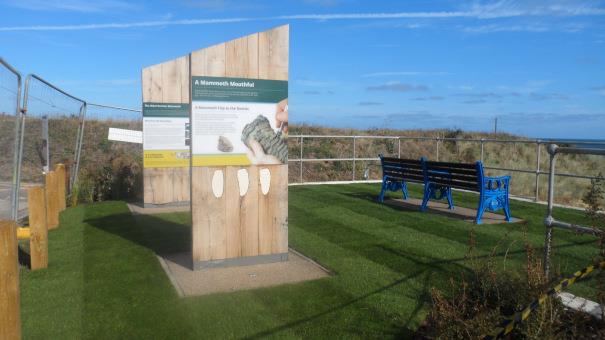
WEST RUNTON MAMMOTH
The discovery of the mammoth, or West Runton Elephant as it is also known, was made in 1990, when local residents Margaret and Harold Hems saw a large bone sticking out from the cliff face and contacted Norfolk Museums Service. It was identified as a pelvic bone of a large Steppe mammoth. A year later a local fossil hunter called Rob Sinclair discovered more large bones and an exploratory excavation took place, followed by a serious three-month long excavation in 1995, carried out by the Norfolk Archaeological Unit.
The exploration unearthed 85% of a mammoth skeleton, the most complete skeleton of a Steppe mammoth ever found in the world. The remains are very fragile and the majority of the West Runton Elephant lies in controlled storage at Gressenhall Museum, but there is a small display in the Norwich Castle and Cromer Museums.
Further analysis of the bones revealed several interesting facts; it is known that the mammoth was a male who died at about the age of 42 in a fresh-water river bed. He would have been about 4m tall at the shoulder and weighed about 10 tonnes. The animal suffered from a damaged femur which may have contributed to its early demise. Scars to the bones also suggested hyaenas feasted on the carcass.
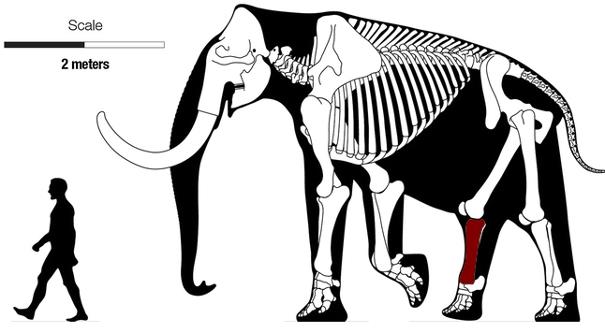
GEOLOGY OF WEST RUNTON
It’s easy to see the historic geology of the area, with the rainbow of coloured earth layers in the crumbling cliffs. Many millions of years divide the chalk layer from the next – this was a time when the sea was eroding the land.
The soft cliffs are ideal for burrowing insects such as the rare rove beetle Bledius filipes; thought to be only known in the UK. Other rare species recorded at West Runton cliffs include the nocturnal cliff comber beetle Nebria livida, found only on soft cliffs in Norfolk and Yorkshire.
The chocolate brown, fossil-studded layer at the base of the cliffs, called the West Runton Freshwater Bed, is 720-650,000 years old. It was here that the West Runton mammoth met its death over 600,000 years ago.
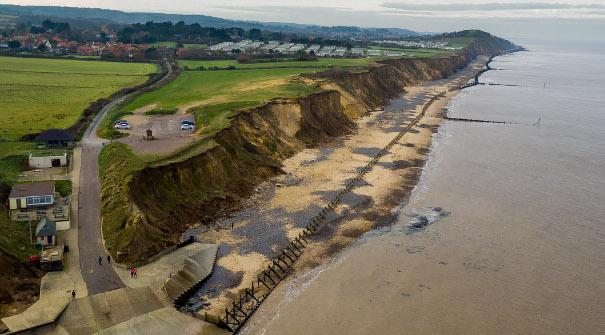
FOSSIL HUNTING AND ROCK POOLING
West Runton is a fabulous place for all the family to find out about the creatures which inhabit the sea through rockpools. At low tide, knobbly pools of the chalk reef emerge from the sea. Laid down more than 90 million years ago by the skeletons of tiny plants living in far warmer seas than today's, the rock pools now a temporary home to limpets, crabs, sea anemones and starfish.
These rockpools as well as the shingly parts of the beach at low tide, are the best, and safest place to look for fossils at West Runton (please do not dig into or climb the cliffs) which is when the chalk on the foreshore is exposed. The Cromer Forest-bed is exposed here during scouring tides which is rich in fossils such as belemnites; small, bullet-shaped fossils from a squid-like animal, over 70 million-years-old.
Also found here are fossil sea urchins which look like a five-point star on a pebble as well as fossil sponges which have bubbly, flower-like patterns within a flint pebble. You may also come across amber and also look for mammoth teeth (or a segment), which looks like stale, sliced loaves of bread. They can be up to 30cm long and ridged and you can tell what species the tooth is from by the number and thickness of ridges.
If you find a fossil, use the Deep History Coast App to identify it, or see our identifier here. You can also take any finds to the Cromer Museum where experts will tell you more about its origins.
When you’ve finished exploring, there are plenty of places to buy a snack and a drink, to enjoy chips plus there are plenty of places to stay nearby. There is also a café with facilities on the beach. Just up the road is The Links, a famous golf course designed around the turn of the 20th century.
Related
Comments
Comments are disabled for this post.






